Satrunjaya is an ancient Jain place of pilgrimage where it is believed that Pundarika, the main disciple of the first Jain Tirthankara Adinatha, obtained enlightenment. On the two summits of the hill, which rise 600 m above the plain around the town of Palitana, there are many hundreds of multi-spired temples.
Everyday pilgrims come to pay reverence to a variety of Jain saints.
The sanctuaries are grouped in fortified enclosures or tuks, named after their founders. The Bhulavani or Labyrinth is a large building divided into a series of small crypt-like chambers with an elaborate domed ceiling.
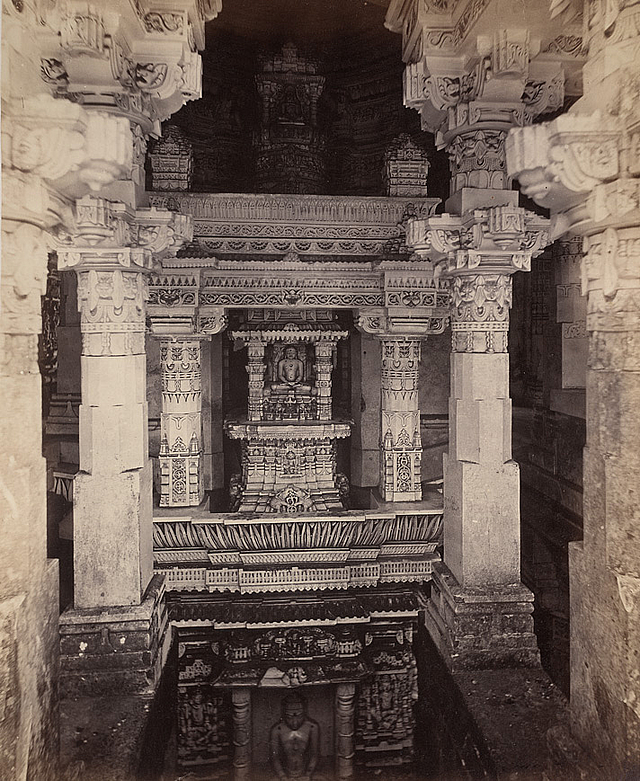
Bhulavani - Central Shrine
Photograph of the Bhulvani temple, Satrunjaya from James Burgess, 'The Temples of Satrunjaya, the celebrated Jain place of pilgrimage...' by Skyes and Dwyer in 1869.
The Bhulavani or Labyrinth is a large building divided into a series of small crypt-like chambers with an elaborate domed ceiling built in the 18th cenury. The central shrine has an unusual opening in the floor which enables to look an image in a sunken storey. The pillars have tall square bases and polygonal shafts with ornamental motifs.
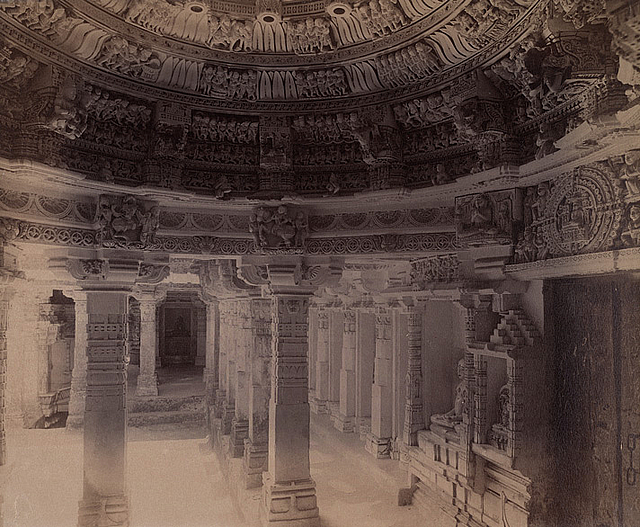
Interior of the Bhulavani
Photograph of the interior of the Bhulavani, Satrunjaya taken by Henry Cousens in the 1880s-90s.
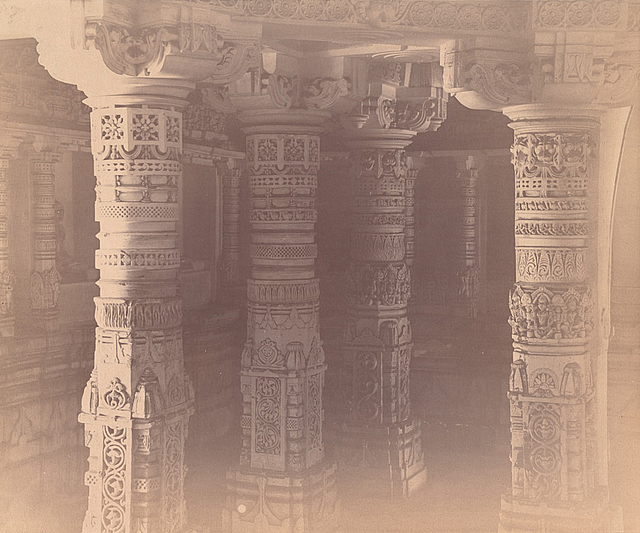
Photograph of the carved pillars in the Bhulavani at Satrunjaya, from the Archaeological Survey of India Collections taken by Henry Cousens in the 1880s-1890s.
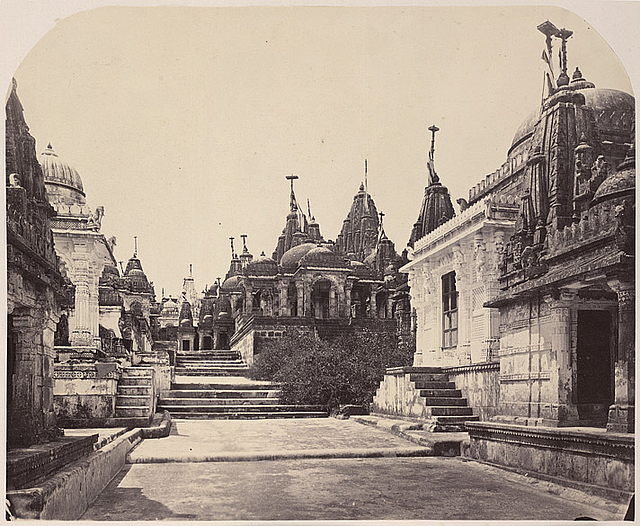
View to the West from the Bhulavani
Photograph of Satrunjaya from James Burgess, 'The Temples of Satrunjaya, the celebrated Jain place of pilgrimage...' by Skyes and Dwyer in 1869.
The sanctuaries are grouped in fortified enclosures or tuks, named after their founders. In this view it is possible to see the white temple covered by a dome of Sah Vardhichand Gulabachand of Gwalior built in 1852. On the other side there is the Samita Shikhara temple.
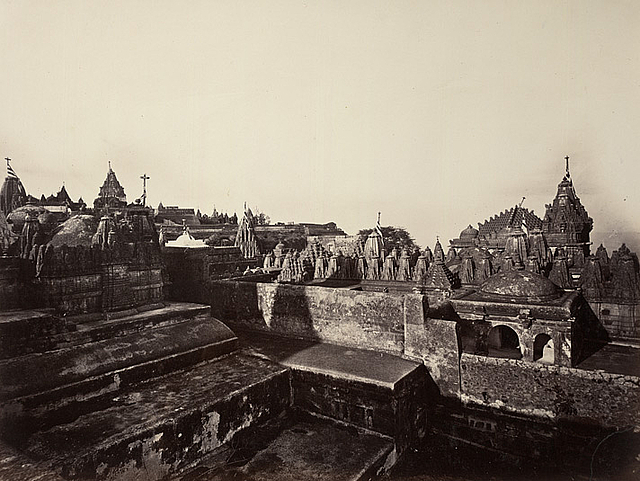
View from behind the Bhulavani
Photograph of Satrunjaya from James Burgess, 'The Temples of Satrunjaya, the celebrated Jain place of pilgrimage...' by Skyes and Dwyer in 1869
Most of the temples date to the 16th century-earlier temples were destroyed by Muslim invaders in the 14th and 15th centuries. The Bhulavani or Labyrinth is part of the south ridge of the hill.
